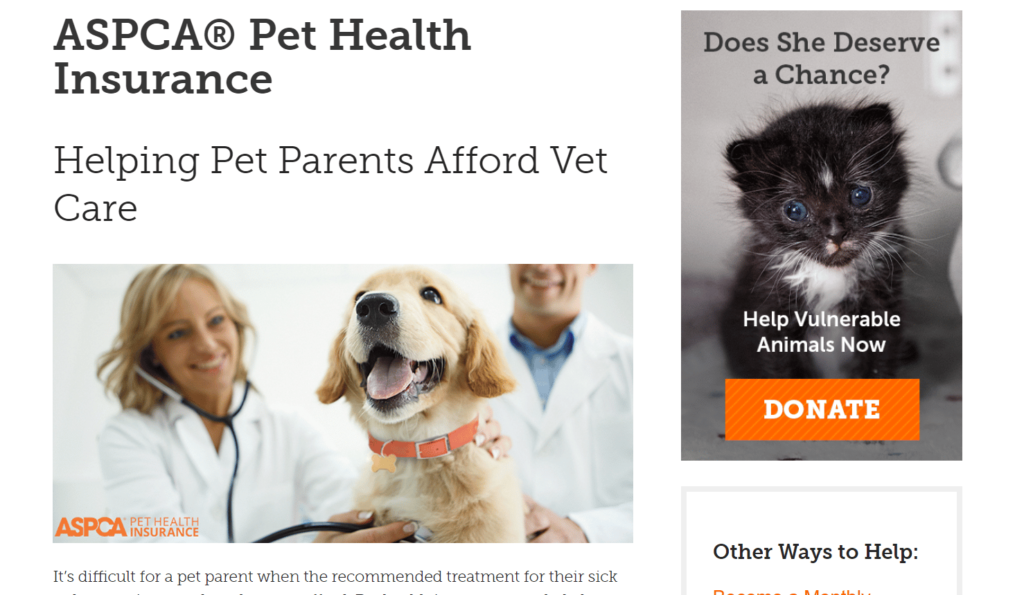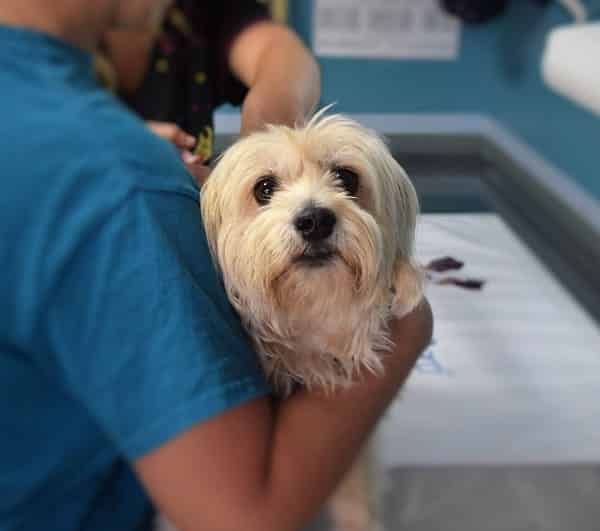5 Best Pet Insurance Companies For Dogs and Cats in 2023

Veterinary bills can be financially and emotionally stressful as a result, you must seek the best pet insurance companies.
This can help you cover your dog or cat with unexpected bills which will rise due to illness and injury.
In this article, we have put together the 5 best pet insurance companies for dogs and cats and the types of insurance policies.
Also, you will learn about the things that pet insurance covers and the things it doesn’t cover.
Not only that, but you will also learn the vital things to put into consideration before choosing a pet insurance company.
In addition, we have answered some of the frequently asked questions about pet insurance companies.
So, let’s get into the details.
Learn more about pet insurance in this article How Pet Insurance Works (A Complete Beginner’s Guide).
What is Pet Insurance?
Pet insurance is a type of insurance coverage that helps you pay for your pet’s medical expenditures as well as unexpected illnesses and accidents.
It’s a type of health insurance policy that protects your pet and also prevents you from paying expensive vet costs.
Basically, what a pet insurance company does is reimburse you for the cost of the vet bill after paying.
That is, after footing the bill for the treatment of your pet at any licensed vet in the US, you simply file a reimbursement claim for the cost.
That said, let’s learn about the types of pet insurance policies.

What Are The Types of Pet Insurance Policies?
There are several different pet insurance plans available that can meet different needs.
Since policies might vary, it’s crucial to confirm that you know what yours covers.
1. Lifetime pet insurance policy
This is also known as a renewal benefits policy and this covers your pet’s medical illnesses and injuries.
Although any illness or injury your animal has before the policy started will not be covered.
This policy, however, covers your pet to a set amount each year as long as the insurance policy is still active.
Meaning your animal won’t be covered for any additional treatments it needs during that year if the overall limit is reached.
So, the entire amount of coverage under each section it covers is once again accessible when you renew your insurance.
As long as the insurance coverage is active and payments are current, there is no limit on how many times an illness or accident can be covered in this way.
2. Maximum Benefits Pet Insurance Policy
This type of pet insurance policy is also known as per condition policy whereby the maximum amount for treating a particular illness is only available once.
It provides a fixed amount of money for each illness or injury treatment your cat or dog undergoes as long as the money lasts.
Also, maximum benefits policies only cover your animal for new illnesses and injuries.
This means that any illness or injury your animal had before the insurance started will not be covered.
This policy covers them for injuries and illnesses until the maximum amount is reached as long as the policy is in force and the premiums are paid.
However, once the full amount of the benefit has been reached, treatment of that particular illness or injury will not be covered again.
As a result, you will then be responsible for any ongoing treatment for that particular injury or illness.
But any unrelated illness or injury will be covered until the maximum benefit of that condition is reached.
In conclusion, if your cat or dog receives treatment for a particular condition and it appears again the policy will view it as the same condition and will not cover it.
This means that the maximum amount for a condition will only be available once for the duration of the policy, not for each time your pet has that particular illness.
3. Time-Limited Pet Insurance Policy
This policy is typically for 12 months and it has two parts which are:
- A fixed amount that covers your cat or dog for the treatment of each illness or injury. (This has been explained above scroll up to read.)
- Then we have a set time period for which each treatment for injury and illness is covered. This particular policy is similar to that of the maximum benefit policy but in this case, it deals with the period and not the amount.
Basically, the policy will cover the treatment of your cat or dog for a particular illness or injury for 12 months.
That is, it does not relate to the duration of the policy but rather, it refers to the amount of time a condition is covered for.
Also, this policy covers your cat or dog for only new medical illnesses and injuries. Hence any illness or injury they had before the policy will not be covered.
Have in mind that when the set period or fixed sum for a particular illness and injury ends, your pet will not be covered for that particular condition again.
Issuers see these as reoccurring conditions that are related to the previous illness and will treat it as one condition for the duration of the policy.
4. Accidents Only Pet Insurance Policy
This policy only covers new injuries and pays a certain amount to assist with the cost of your pet’s care.
As a result, any injuries they sustained prior to the start of the policy will not be covered.
Accident-only policies may sometimes include an amount towards the cost of emergency treatment for an illness.
In addition, accident policies do have a 12-month time limit. Thus it covers treatment by a vet for 12 months, starting from the day the vet care begins per condition.
So, you must renew your policy at the end of the policy period and keep your payments current to ensure your pet remains covered.
Especially if the coverage is for a 12-month treatment period or your pet’s treatment will last past your renewal date.
Let’s learn about some of the things that pet insurance companies cover in their policies.
What Are The Things covered by Pet Insurance companies?
Pet insurance companies cover the cost of vet fees and certain medical bills depending on what the company is offering.
In addition, there are some other things that pet insurance companies cover:
1. Death By Accident or Illness Policy
As a matter of fact, whenever your pet dies, you can actually get back the cost of what you paid for it or the amount you can sell it.
However, some pet insurance companies have an age limit which they can pay for eight to eleven years for a cat and five to nine years for a dog.
After this year they will not pay or it might result in you making a contribution to costs.
In the case of illness, they also repay you for any cost you incur whenever your pet is I’ll up your annual coverage limit.
Below are some examples of the illness and common conditions that pet insurance companies cover:
- Cancer
- Digestive illnesses
- Chronic conditions
- Hereditary conditions
- Congenital conditions
- Dental illness
- Hip dysplasia
- Heart disease
- Diabetes
- Infections
2. Missing Pet Policy
Most pet insurance companies also contribute to the cost of putting up a poster and paying for a reward if your pet goes missing.
3. Cattery and Kennel Fees
If ever you get sick or hospitalized and there is no one to look after your animal, pet insurance providers will assist you in paying for your pet to be in a cattery or a kennel
However, for this to effectively take place you will have to be in the hospital for at least two to four days.
4. Euthanasia, Cremation, and Burial
Some pet insurance companies may cover the cost of euthanizing, cremating, or burying your pooch.
5. Overseas Travel Policy
Most insurance company policies do cover the cost for your pooch in cases of illness, accident, or needing veterinary treatment when abroad.
Again, they also cover canceled flight and lodging expenses in a situation whereby you have to postpone a vacation due to your pet falling seriously ill before you are scheduled to leave.
Now are know the things that pet insurance companies do cover let’s learn about the things they don’t cover
You may also like to read about What Does Pet Insurance Cover? (A Complete Beginner’s Guide).
What Are The Things Not Covered By Pet Insurance Companies?
There are also some things that pet insurance companies do not cover regardless of the type of plan you paid for.
Here are some of the conditions and illnesses that pet insurance policies do not cover:
1. Pre-existing illness or injury
This is a situation whereby your pet already had a medical condition prior to you taking an insurance policy.
These are chronic conditions like heart abnormalities or hip dysplasia.
2. Waiting Period
Illnesses that start within the first 10 to 14 days of your pet insurance coverage are often not covered by most pet insurance providers.
There won’t be a “gap” in your coverage because some companies will waive this fee if you are transferring from another insurance.
3. Experimental treatment
These are diagnoses and therapies that are considered experimental, investigations, or not up to the veterinary medical board of your state’s approved standards of practice.
That said here are some other conditions:
- Non-veterinary expenses.
- Issues related to breeding or pregnancy
- Food, dietary and nutritional supplements
- Grooming.
- Non-veterinary expenses
- Routine and preventative treatment
Now we know what pet insurance is, the policies, and what they cover, let’s check out some of the top pet insurance companies.
Read this article next: 5 Best Pet Insurance Companies For Dogs and Cats in 2023.
What Are The Top Best Pet Insurance Companies for Dogs and Cats?
1. FIGO: Best For Reimbursement Options
Most pet insurance companies only provide up to 90% reimbursement but with FIGO pet owners can select up to 100% reimbursement.
Additionally, Figo provides a decreasing deductible. Your deductible will drop by $50 each year you go without a claim from Figo until it is $0.
Also, there are extra benefits you can add to your policy to help pay for vaccinations and preventative care, veterinary exam fee plans, and wellness plans.
FIGO also covers boarding costs and third-party property damage liability protection as well as coverage for final respect for cremation and burial.
That said, here are the three accident and illness policies for dogs and cats that Figo offers:
- Essential: This plan costs $15.40 to $38.48/month for cats and dogs and provides up to $5000 in annual benefits.
- Preferred: This costs $16.85 to $41.01/month for cats and dogs and provides an annual benefit capped at $10000.
- Ultimate: This plan costs $21.72 to $43.82/month for cats and dogs and has an unlimited annual benefit.
Each of these plans covers conditions such as hip dysplasia, chronic conditions, and hereditary and congenital conditions.
Pros
- Offers up to 100% reimbursement
- One-day waiting period for injuries and 14 days waiting period for illness.
- Does not cap claim payment by condition type
- No upper age enrollment limit
- Free 24/7 vet helpline
Cons
- Some of their coverage requires you to purchase an additional rider
- Can only include knee condition coverage after a 6-month orthopedic waiting period.
To get a free quote from FIGO as well as other information fill out this quick quote form.
2. Spot: Best For Unlimited Coverage

This particular pet insurance company offers two types of policies for cats and dogs.
One is for accidents only and the other coverage is for both accidents and illnesses which also includes exam fees and vet visit fees.
They offer two types of Wellness and preventive care coverage options which are Gold and platinum.
So, you can add any of the options to your accidents only or accidents and illness plan for an additional cost.
Spot provides you with various ways to customize your plan with options for annual coverage limits, deductibles, and reimbursements.
In addition, the spot makes it perfect for those who need only minimal coverage with their cheap plan on accident-only coverage.
That said, they cover advanced treatments like chemotherapy and surgery, stem-cell therapy, and acupuncture.
Price ranges from $35 to $45 per month for dogs and $25 to $35 per month for cats.
Pros
- No upper age limit
- 30 days money back guarantee
- Covers the veterinarian’s office visit fee for illness and accidents
- Offers a multi-pet discount of 10%
- Optional wellness plan available
- Has a 24/7 pet telehealth line
- A low $100 deductible is available
- Its standard plan includes microchipping.
- Has option for unlimited annual coverage
Cons
- Doesn’t cover pets under eight weeks old.
- The waiting period for accidents is 14 days
To get a free quote from SPOT, simply fill out this online form
3. ASPCA Pet Health Insurance: Best For Hereditary and Congenital conditions

ASPCA pet health insurance is one of the best due to its partnership with the American Society for the Prevention of Cruelty to Animals (ASPCA).
They offer accident-only, accident and illness, and preventive care for cats and dogs as well as horses.
That said, ASPCA’s premium rates are affordable and they are more flexible when it comes to certain policy terms.
For example, while other companies set an age limit on coverage, they guarantee coverage no matter the age of your animal.
Also, other pet insurance companies do not cover pre-existing conditions; however, ASPCA handles pre-existing conditions that are curable.
This means that if your animal has a curable condition and is free from the treatment and symptoms for at least 180 days it can be covered.
However, the pre-existing conditions don’t apply to knee conditions or ligaments. So if any of these appear during the waiting period, any future ones won’t be covered.
Pros
- Covers horses in addition to dogs and cats.
- Pre-existing conditions are covered after 180 days.
- No upper age limit
- Covered stem cell therapy and microchipping.
- Includes coverage for Exam fees
- Offers a multi-pet discount of 10%
- Has a 24/7 telehealth line
Cons
- There is a limit to the choices you can make for deductibles.
- Doesn’t offer unlimited annual coverage
Visit the ASPCA Pet Health Insurance website to get a free quote instantly
4. Lemonade: Best For Kittens and Puppies

This pet insurance company is not only the best for kittens and puppies, but it’s also the best for quick claim processing.
With the use of the company’s app, you can submit a claim and get reimbursement in minutes according to the company.
Basically, they offer a variety of coverage limits, reimbursement and deductibles, and discount options.
Also, they offer an inexpensive boost coverage and several ads-on as a result, making it a more comprehensive coverage for your animal.
This add-on includes packages like physical therapy, hydrotherapy, and acupuncture.
That said, Lemonade has 3 different types of waiting periods, which are 2 days waiting period for accidents, 14 days for illnesses, and 6 months for cruciate ligament injuries.
When it comes to their price it varies depending on the age of your pet, if it’s a dog or a cat, and also the breed involved.
However, the fact that Lemonade is the best when it comes to kittens and puppies they’re not so good with older pets.
Price ranges from $25 to $45 per month for dogs and $15 to $35 per month for cats.
Pros
- Offers a 48 hours waiting period for accidents
- No age limit for coverage
- Optional wellness plan available
- Multiple discount programs
- Fast processing of claims
- Multiple policies and riders are available
- Offers a multi-pet discount of 10%
Cons
- Don’t cover behavioral treatments
- No unlimited benefits
- They are only available in 37 states
To get a quick and simple quote from Lemonade, fill out this simple online form by entering your zip code and address.
5. Embrace: Best For Older Pets

Embrace pet insurance provides you with a variety of options for coverage, reimbursement, and deductibles within your budget.
Also, you can lower your premium with a diminishing deductible that reduces it by $50 each year you don’t have a claim paid.
Their coverage includes accidents, illnesses, and other conditions. In addition, they also offer an accident-only policy.
However, when you buy an accident-only policy you won’t be covered for conditions included in accident and illness plans.
Embrace is best for older pets because they are willing to offer coverage for animals that are up to the age of 15.
In addition, all of their policies come with a 30-day money-back guarantee or a prorated refund.
Price ranges from $25 to $55 per month for dogs and $20 to $30 dollars for cats per month.
Pros
- Offers employers and military benefits
- Has a 24/7 pet telehealth line.
- 2 days waiting period for an accident.
- Covers the veterinarian’s office visit fee for illness and accidents.
- Provides an excellent range of options for annual coverage, reimbursement, and deductibles.
Cons
- No unlimited benefits
- A waiting period of 6 months for coverage of orthopedic conditions
Visit the Embrace website to get an instant quote by filling in your pet’s age, breed, and location.
Before choosing or enrolling for pet insurance, there are some vital things you must put into consideration.
If you are in Canada, check out these 3 Best and Cheapest Pet Insurance In Canada.
What Are The Guides for Choosing The Best Pet Insurance Companies?
There are a lot of factors to put into consideration when looking for the right pet insurance companies.
Pet insurance companies vary by state and policy terms may change annually because no two policies are exactly the same.
The following guides below can help you choose the right insurance company and policy for you and your pet.
1. Check Weather Your Pet Is Eligible
If your cat or dog is elderly or suffers from an ongoing medical condition, health and accident insurance coverage might be too expensive thereby not providing the care they need.
However, a discount plan might be of more value since they don’t exclude senior pets or those with pre-existing conditions.
In as much as some companies might not allow senior pets to enroll for the first time, they can be eligible for accident coverage if they can afford it.
Again, depending on the insurance company, puppies and kittens must be at least 6 to 10 weeks old to be insured.
The majority of policies, however, provide coverage for a pet’s whole life as long as you continue to pay the payments.
2. Decide How Much Coverage You Want
Each pet insurance provider offers different coverage limit options, it can be annual, per condition, or per incident.
Meanwhile, some cap the amount they pay out annually which has a single deductible and starts over every year while some don’t.
That said, each condition has its own deductible but you only have to meet the deductible only once in the pet’s lifetime.
While per incident coverage means that the same deductible is applicable to every incident and starts over for every incident.
So, knowing the annual limit you can pay for vet bills is important before enrolling in a plan.
You might go years without paying for anything except routine care if your dog or cat is relatively healthy.
3. Understand Deductible and Reimbursement percentages
Most pet insurance companies have a deductible which is the amount you pay before your insurer will reimburse you.
Usually, the deductible ranges from $100 to $250 or more although some companies apply deductibles to each illness and injury.
As a result, making you pay the deductible every year but if your pet remains healthy this strategy will save you money.
Take notice that this will make you pay more out of your pocket if anything unexpected happens to your cat or dog.
While for reimbursement, most pet insurance companies will reimburse you a percentage of your vet bill.
This you will have to choose when buying a plan and the most common reimbursement choices are 70%, 80%, or 90%.
Basically, this is the amount your issuer will cover for you off your vet bills after paying your deductible.
For instance, if your bill is $1000 and the company offers 70% reimbursement, you’re responsible for $300 of the bill.
In conclusion, the lower your deductible and the higher your reimbursement rate can lead to a higher premium.
While a higher deductible and a lower reimbursement rate can mean a lower premium.
4. Check For Discounts
Checking for discounts is one of the good ways in choosing pet insurance companies because this will help you save.
Below are some common discounts you should look out for:
- Annual Pay Discount: You’ll be able to save money if you can afford to pay your premium annually rather than on a monthly basis.
- Bundle Discount: you get a lower price when you bundle with a renters or homeowners insurance policy under the same provider.
- Employee Benefit Discount: Some companies might decide to offer pet insurance discounts voluntarily and ranging from 5% to 10%
- Multi-pet Discount: many pet insurance companies offer discounts when you insure more than one animal with them.
- Military Discount: Being a former or active duty military member offers you a discount on some insurance policies.
- Spay/Neuter Discount: when you spay or neuter your animal before enrolling for an insurance policy, this will attract a premium discount from your issuer.
Also, read about The 4 Best Pet Insurance For Spaying and Neutering
5. Look For Exclusions and Waiting Periods
Exclusions are some of the conditions that some pet insurance companies do not cover. So, find out whether your animal has any of the conditions in the policy.
Meanwhile, some plans have a short waiting period that is usually 14 days while some are longer than that.
For example, Spot has just one day waiting period for injuries and 14 days for illnesses.
That said, you can scroll up to get into detail about most of the conditions that some pet insurance companies don’t cover.
Above all, having an idea of what an insurance policy’s exclusion and waiting period entails will help you choose better.
6. Examine Extra Cost
Some pet insurance providers cover commonplace treatments like checkups and vaccines.
Despite the fact that this may sound interesting, do the arithmetic to decide if the additional expense is worth it.
Compare the annual wellness insurance premium to the amount you would have to pay out of pocket each year for the plan’s covered treatments.
Make sure you read and understand the details enough because each pet insurance provider has a different way they handle “wellness”.
7. Exam Fee and Benefits
You will have to pay an exam fee whenever you take your dog or cat to the vet for an injury or illness.
This can cost $100 or more depending on your veterinarian and the nature of the appointment.
It’s important you check the policy plan if the coverage includes these exam fees before you enroll cause not all do.
Meanwhile, it’s important you look out for extra benefits like a 24-hour vet helpline in case your animal gets I’ll at odd hours.
For example, Nationwide pet insurance customers are entitled to special discounts at any Walmart pharmacy on pet prescriptions.
Is It Worth It to Use Pet Insurance Companies?
Yes, they are worth it because they help to reduce the expenses that come with veterinary care for your cat or dog.
This type of care can be quite expensive and at some point, your cat or dog will need treatment for an illness or an injury.
So, for you to benefit better from the policy you just have to understand the type of plans they have and what they cover in order to know the best plan that suits you.
Above all, it’s a good way of giving your animal the care it needs at any time also, the value of pet insurance depends largely on your expectations.
Conclusion
Your four-legged family members can be well-protected against accidents and illnesses with the help of pet insurance.
This is the main reason why you must seek the best for them as a result we have listed some of them in this article.
Also, to help you save while helping your dog or cat you can get policies that have affordable deductibles and reimbursement plans as well as discounts.
That said, before enrolling in an insurance plan make sure you compare the prices and follow the guides mentioned in this article.
Frequently Asked Questions
Do Pet Insurance Premiums Rise As My Pet Ages?
Some pet insurance companies have age limits at which you can enroll your animal such as 10 to 12 years
This is because the health of animals gets risky as they age, so enrolling for older pets might be costlier than that for a young animal.
So, it’s possible for you to enroll a senior pet with insurance that has no age limits but the cost increases as they age.
If you want to know about pet insurance companies that have no age limits and the ones best for senior pets you can scroll up to get more information.
Why is Pet Insurance Necessary For My Animal?
Pet insurance is necessary for your cat or dog because it helps to protect you from unexpected costs such as:
- Illnesses and accidents
- Third-party property damage
- Loss, burial, and cremation
- Travel and more.
With pet insurance you can cover all these throughout the lifetime of your animal as a result you put your heart to rest.
What Are The Best Pet Insurance Companies For Dogs and cats?
Based on our findings the best all of them have specific areas they are good at so, it depends on what you are looking for.
Figo is the best when it comes to reimbursement plans, Spot is best for unlimited coverage, ASPCA is for hereditary conditions, Lemonade is best for kittens and puppies and Embrace is best for older pets.
What Are the Costs of Pet Insurance Companies?
The price of your insurance solely depends on if you have a dog or cat, breed, age, size, and location.
Because the premium is sometimes specific to states and zip codes also factor specific to your coverage such as;
- Coverage limits
- Reimbursement rate
- Deductible
- Any options you may have added
- Type of policy
Based on our research, pet insurance for dogs ranges from $20 to $50 per month while for cats it’s $15 to $35 per month.
Do pet insurance companies only Cover Dogs and Cats?
Most pet insurance companies only have coverage for cats and dogs but this is not the case for all companies.
Companies like ASPCA have coverage for horses while Nationwide has a policy for birds and exotic animals.
Do Pet Insurance Companies Cover For Pre-existing Conditions?
Basically, pet insurance policies don’t cover any health condition that occurs prior to the time of enrollment or during the waiting period.
Some issuers like ASPCA cover pre-existing conditions that are curable and free from symptoms for at least 180 days.
Do Pet Insurance Companies Cover For Hip Dysplasia?
Many pet insurance companies cover hip dysplasia since it’s a hereditary condition.
However, some policies may have extended waiting periods specific to this condition, for example, Lemonade has a 6 months waiting period for cruciate ligament issues.
How do I get a dog insurance policy quote?
Most insurers feature an online quote tool on their website that allows pet owners to click through a few questions and get an instant quote.
What Are The Best Pet Insurance Companies for Cats?
The best pet insurance companies for your cat or kitten are:
- Lemonade
- Embrace
What Are The Best Pet Insurance Companies For Dogs?
When it comes to getting the best insurance companies for your dog, it can be a little bit stressful.
Having the best policy for your dog will hove you leave of mind here is our best pick
- Lemonade
- Spot
- Embrace
References
- Investopedia.com – Best Pet Insurance Companies
- Nerdwallet.com – The Best Pet Insurance Companies for 2022
- Forbes.com – Best Pet Insurance Companies Of August 2022
- U.S.News.com – Best Pet Insurance Companies of 2022





